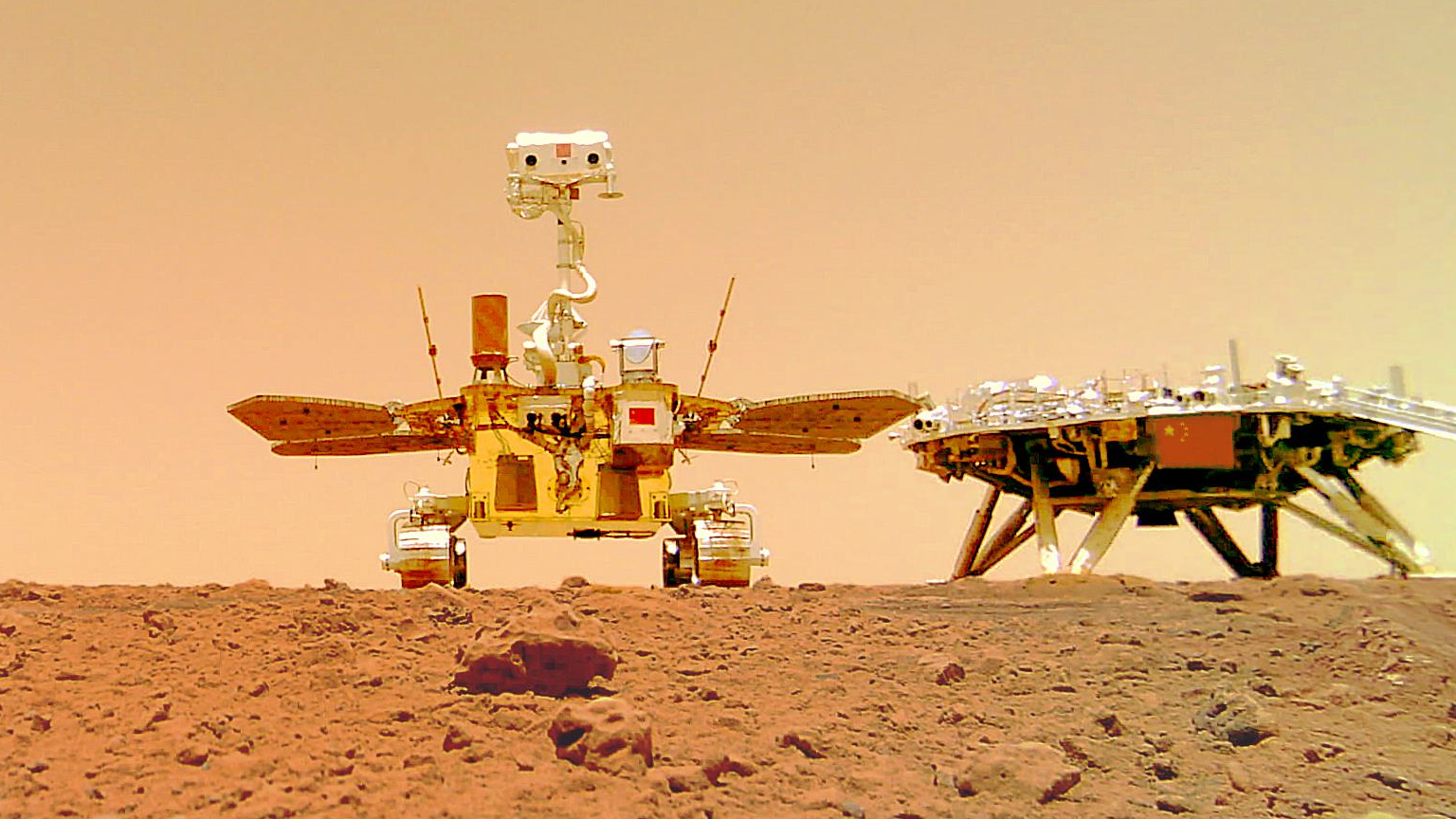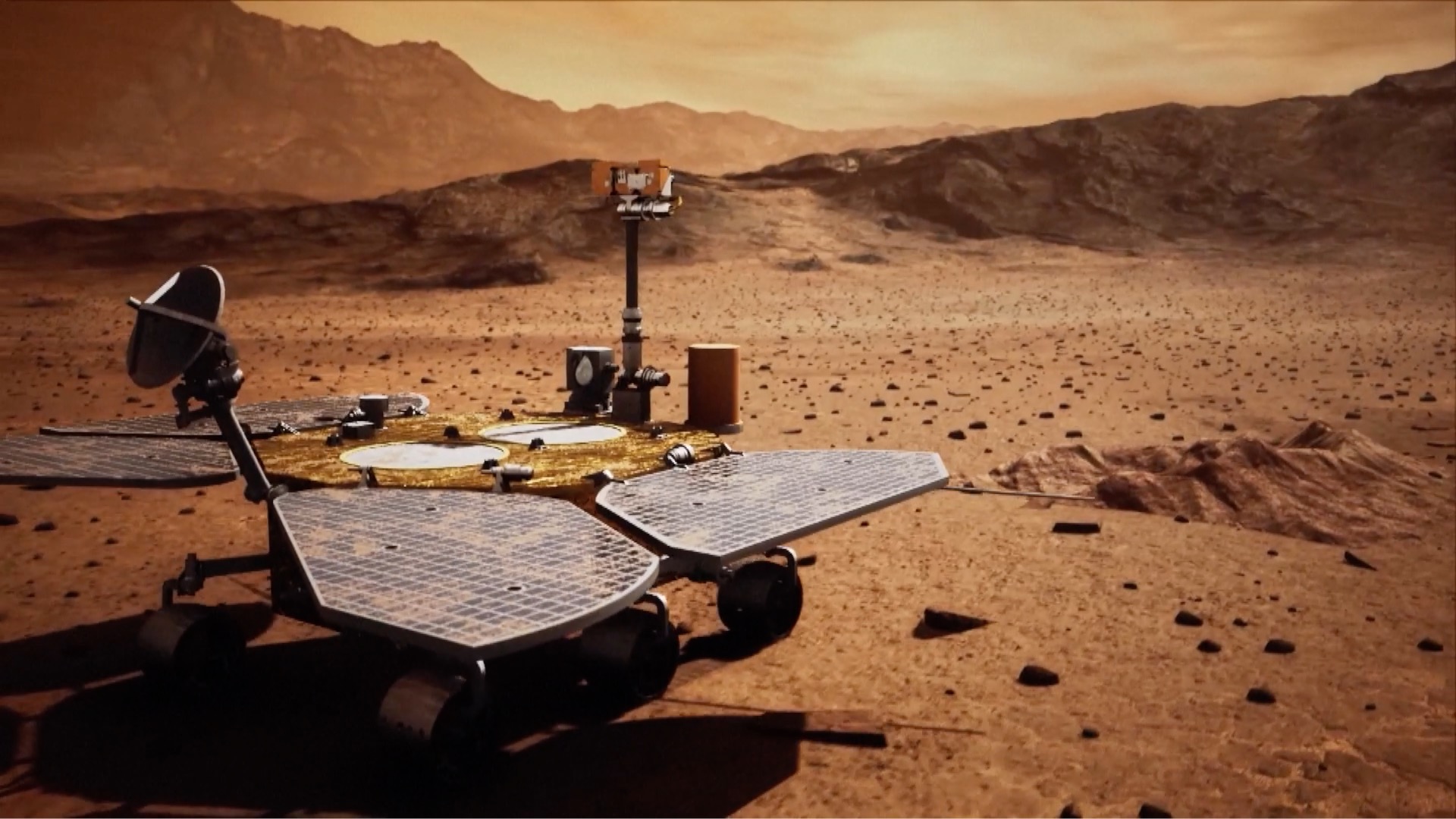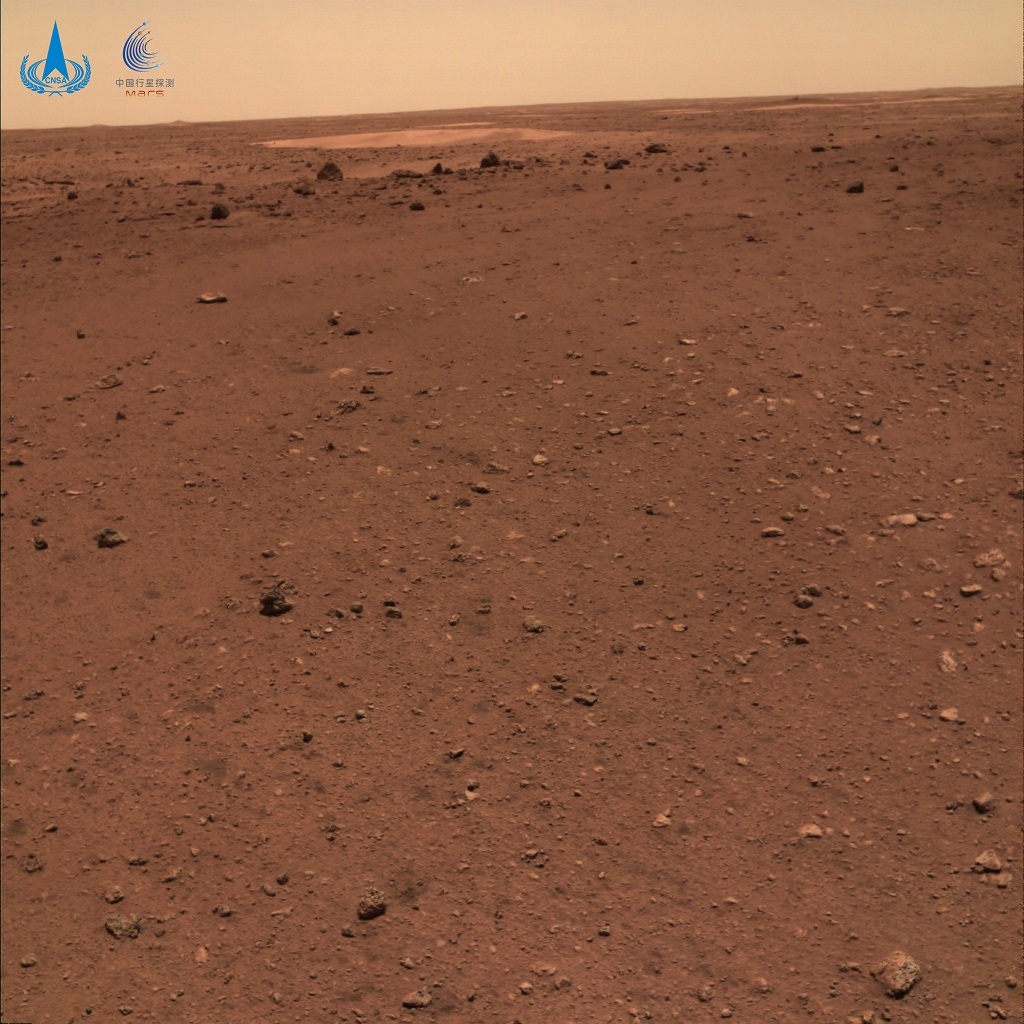
Selfie of China's Zhurong rover (L) and the landing platform. /CNSA
Selfie of China's Zhurong rover (L) and the landing platform. /CNSA
The northern hemisphere of Mars, where China's Zhurong, the rover of China's first interplanetary probe mission Tianwen-1, ushered in the annual winter solstice on Thursday, indicating the coldest season of the year.
Consisting of an orbiter, a lander and a rover, the Tianwen-1 probe landed on Mars May 15, 2021, and a week later the Mars rover Zhurong, which resembles a butterfly and means "the god of fire" in Chinese mythology, drove down from its landing platform onto the Martian surface.
Thanks to the inclination of Mars' rotation axis of 25.19 degrees, similar to that of Earth, orbiting around the sun gives the red planet distinct seasons just like Earth.
The winter solstice occurs on Mars when its sun's direct point occurs at the southernmost point, and the winter solstice fell on July 21 this year.
Wang Kechao, director of Science Popularization, the Purple Hills Observatory, the Chinese Academy of Sciences, told China Media Group (CMG) that "during one orbital cycle, the direct point of the sun also moves back and forth between 25.19 degrees north and south latitude."
"When the direct point of the sunlight is at the southernmost point, that is, 25.19 degrees south latitude, there comes the winter solstice of Mars."
01:00

Mars vs. Earth: Day, season, temperature
Different from Earth, Mars has an orbital period of about 687 Earth days, which means one Martian year is equivalent to about 1.9 Earth years, and its last winter solstice started on September 2, 2020.
Due to a different orbit, the length of each season on Mars is also different from that of Earth.
"Each of its seasons is longer than that of Earth, and the eccentricity of the Mars' revolution orbit is relatively large, which leads to Mars' fast and short pass through the perihelion. While it takes a relatively long time for Mars to pass through the aphelion," said Wang.
"In the winter season, Mars is located near the perihelion. Therefore, in the northern hemisphere of Mars, the spring and summer seasons are about one-third longer than the autumn and winter seasons."
Moreover, the temperature in winter on Mars is significantly lower than that on Earth, as Mars receives less solar radiation due to its distance from the sun.
"Each season on Mars is colder than that on Earth. For example, in the current winter, the temperature in the northern hemisphere of Mars can reach as low as minus 100 degrees, which is colder than anywhere on Earth," Wang added.

Martian landscape image. /CNSA
Martian landscape image. /CNSA
Protection against weather
To tackle the frequent sandstorms in the winter, engineers have designed four tailored measures, including low temperature resistance, sand resistance, power security and other aspects, in the shaping of the Zhurong rover to ensure the safe operation of the Mars patrol and exploration process.
"The first is that the battery pieces installed in the solar wings are made of a special material called superhydrophobic material," said Peng Song, deputy director designer of the Tianwen-1 probe. "Just as how a lotus leaf can let the water drops slip, such material makes it easier for the dust to be blown off."
Zhurong's solar wings are also equipped with directional sun-tracking capability which enables the rover's wings to shift as the sun rises, like those of a sunflower, to maximize solar energy absorption despite the low angle of the sun during the winter.
The third measure is that the rover can conserve energy and reduce energy consumption by changing its working patterns in windy and sandy weather.
If all of the first three measures fail to solve the energy problem, the rover will go into dormancy until the dust clears, when it will wake up automatically and resume work, according to Peng.

As of May 15, 2022, China's first Mars mission, Tianwen-1, has been smoothly going on for a whole year. /CGTN graphic designed by Yin Yating
As of May 15, 2022, China's first Mars mission, Tianwen-1, has been smoothly going on for a whole year. /CGTN graphic designed by Yin Yating
China's Mars Mission
May 15, 2022, marks the first anniversary of the remarkable touchdown by China's Tianwen-1 on Mars in the southern part of Utopia Planitia, a vast plain on the northern hemisphere of the red planet, symbolizing the country's first probe landing on a planet other than Earth.
The name Tianwen, which means "Questions to Heaven," comes from ancient Chinese poet Qu Yuan's masterpiece and reflects China's persistence in seeking truth and exploring the universe.
The China National Space Administration (CNSA) released the first photographs taken by Zhurong last June 11, solidifying the success of the country's first Mars exploration mission.
Upon landing, Zhurong has kept moving southward and transmitted data back to Earth.
In addition to exploring the Mars surface, it also passed through multiple complex terrains and detected Martian rocks, sand dunes and impact craters, thus obtaining a large amount of data.
By August 15 last year, the Mars rover had worked on the red planet for 90 Martian days, or about 92 days on Earth, accomplishing all scheduled tasks. Since it was in good condition, the rover continued service despite reaching its 90-day target.
Zhurong also performed an in-orbit relay communication test last November with the European Space Agency's Mars Express spacecraft.
Read More:
Beyond Infinity: One year on Tianwen-1's triumphant landing on Mars
How does China's Mars rover cope with winter on the Red Planet?

